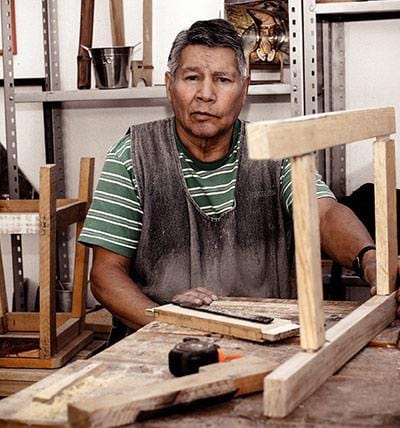Different kinds of musical instruments have their own unique sounds, abilities and uses.
These are sometimes grouped into families.
The four main families are woodwinds, brass, strings, and percussion.
They are all instruments that produce sounds by doing something different with air, whether blowing it out, blowing it in, vibrating the air, or a combination of all of these, depending on the instrument.
Music is an art form that is used to express emotion and bring people together.
It is made up of different styles, genres, and instruments.
Today we will discuss the four main types of musical instruments and their uses.
Important Types of Instruments: Percussion, Strings, Woodwinds and Brass
The primary objective of musical instruments is to produce sound. Each type has its own unique sound, purpose, and style. Percussion, strings, woodwinds and brass instruments are the primary instruments used to make music.

They are used to play the melody, chords, and background noise in songs.
They also help to create the sound of an instrument.
Some examples of percussion, strings, woodwinds and brass instruments are drums, guitars, violins, cellos, and trumpets. So, their aim is providing a sound that is used in music.
Each instrument is designed to provide a unique sound, which is often used to complement the music being played.
Image credit: Music Images / Image from Depositphotos
Percussion instruments such as drums, gongs, and cymbals are used to provide a rhythmic background to a piece of music, while strings instruments such as violins, violas, and cellos are used to provide a melody.
The wind instruments such as trumpets, flutes, saxophones, and oboes are used to provide a sense of atmosphere or expression to a piece of music, and the brass instruments such as trombones, cornets, and French horns are used to provide a sense of drama or intensity.
Percussion Instruments in Music
The primary function of a musical instrument is to generate sounds which are pleasing to the ear. Percussion instruments are made with a variety of materials such as wood, metal, plastic, and even rubber, using the striking or vibrating of these materials to generate sound. Over the years, percussion instruments have changed a lot.
Steel-based instruments, for example, have replaced the wooden percussion of earlier days, while electronic instruments have taken the place of acoustic instruments. To understand the role of percussion instruments in music, you need to first understand the rhythm of a piece of music. The percussion family of musical instruments are instrumental pieces that produce sounds through the use of mechanical vibrations. Some examples of percussion instruments include drums, rattles, keyboards, sticks and anything else that is used to accent or beat out a rhythm.
According to Steinken.com, percussion instruments can be categorized into three types: pitched, unpitched and struck instruments. Pitched percussion instruments are those that can produce a note just like any other musical instrument. Unpitched percussion includes things like drums, bowl shakes and Taiko drums. Struck percussion includes things like the xylophone and castanets.
Percussion instruments are ones that do not require wind or bowed strings to produce sound.
Many of the most popular and familiar instruments are in the percussion family, including drums, and other less familiar percussion instruments such as the xylophone. Many of the sounds we enjoy listening to in music today are thanks to the Percussion family of instruments. From simple rhythms to complex melodies, the percussion family of instruments adds flavor and excitement to any musical soundscape.
Woodwind Instruments in Music
They include the flute, oboe, clarinet, bassoon, and saxophone. These instruments are played the same way as the flute, except they have a longer, deeper, and louder tone. One of the main differences among woodwind instruments is their size. A flute is much larger than a clarinet, for example, and is used for mostly lower-register music.
Wind instruments make sounds by blowing air through a reed, producing vibrations and sounds by doing so. You may not realize it, but woodwind instruments are extremely common in classical music.

From solo melodies to the main theme of a concerto, their high pitches and unique sounds are important to many pieces.
Woodwinds make up a family of instruments, and there are several types.
However, the woodwind family generally consists of the following four types of instruments: flute, oboe, clarinet and bassoon. All woodwind instruments have one thing in common: they are high-pitched.
In fact, the highest of all the instruments are found in the woodwind family.
This is important because high pitches are often highlighted in classical music.
For example, solo melodies are often performed on woodwind instruments because the higher pitch makes the melody more easily audible when compared to the other instruments in the piece.
String Instruments in Music
String instruments are a class of musical instruments played with a bow, a plectrum, or a stringed instrument such as an electric guitar, to create a musical sound. Some string instruments are fretted, others make sound by using friction, and some by using both.
Other instruments are designed not to have a fretted neck; this includes the violin and viola family. In most string instruments, strings run from the bridge to the tailpiece, which in turn is attached to the body. So, there are dozens of string instruments used in contemporary music, as well as traditional ones like those still used in Asia and Africa.
Some of the most popular string instruments used in contemporary music include the violin, cello, upright bass, and guitar, as well as models of those instruments that have been fashioned more recently, such as the viola caipira (a guitar-shaped viola), electric basses, and electric guitars.
Other popular string instruments in music include the piano and harp, which are technically classified as keyboard instruments. All string instruments produce sound by forcing vibrations through the instrument’s strings. The musician then controls the sound produced by plucking or striking the string, or by manipulating the string’s length, frequency or tension.
Piano lessons in Las Vegas are not just a means to learn an instrument; they are an experience that combines the city's vibrant energy with the timeless allure of music. Whether you're a beginner looking to master the basics or an advanced pianist aiming to refine your skills, Las Vegas offers a diverse array of piano instructors and studios to suit every level and musical preference.
Brass Instruments in Music
Brass instruments are instruments made of brass and silver that produce musical sounds by vibrating air. Brass instruments have a bell attached to them and often contain a mouthpiece that helps amplify the sound. The trumpet, horn, trombone and tuba are made of brass, a metal of a yellowish color.
Like other metals, brass is made of pure atoms combined in different ways. But unlike other metals, brass can make different sounds when it’s formed into instruments or voices. Brass instruments make a sound when the air flowing out of the instrument is interrupted by valves, lips or reeds.

The flow of air makes the metal vibrate, making a sound that’s amplified by the instrument’s shape.
On instruments with open holes like the trumpet or trombone, you can hear the harmonics or multi tones made by air flowing through multiple valves.
On instruments with closed holes like the horn or tuba, you’ll just hear one note at a time.
Final Thoughts
In this article, we talked about different types of musical instruments.
Make sure to choose the one that suits your needs! We hope this article was helpful and we wish you the best of luck in your musical journey!
Commonly Asked Questions
What is the most popular electronic musical instrument?
The most popular electronic musical instrument is the synthesizer, which is used in orchestral music, film, and television. In addition, there are many different types of electronic musical instruments, including the electric piano, acoustic piano, organs, electric guitars, acoustic guitars and guitar synthesizers.
ABOUT THE AUTHOR
Olivia Poglianich
Content Strategist
Olivia Poglianich is a nomadic brand strategist and copywriter in the wooden crafts and 3D product design space who has worked with brands such as Visa, Disney and Grey Goose. Her writing has taken her all over the world, from a Serbian music festival to a Malaysian art and culture event. Olivia is a graduate of Cornell University and is often writing or reading about travel, hospitality, the start-up ecosystem or career coaching. Her latest interests are at the intersection of web3 and communal living, both on and offline.






